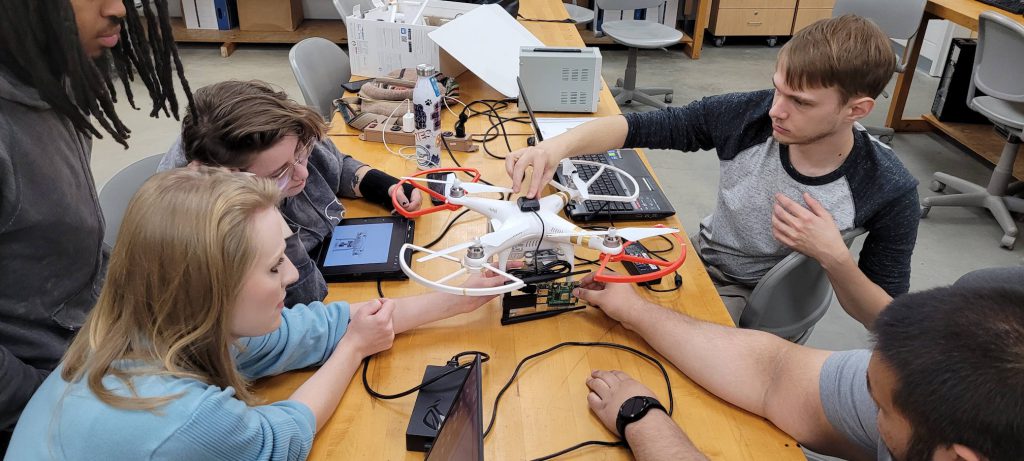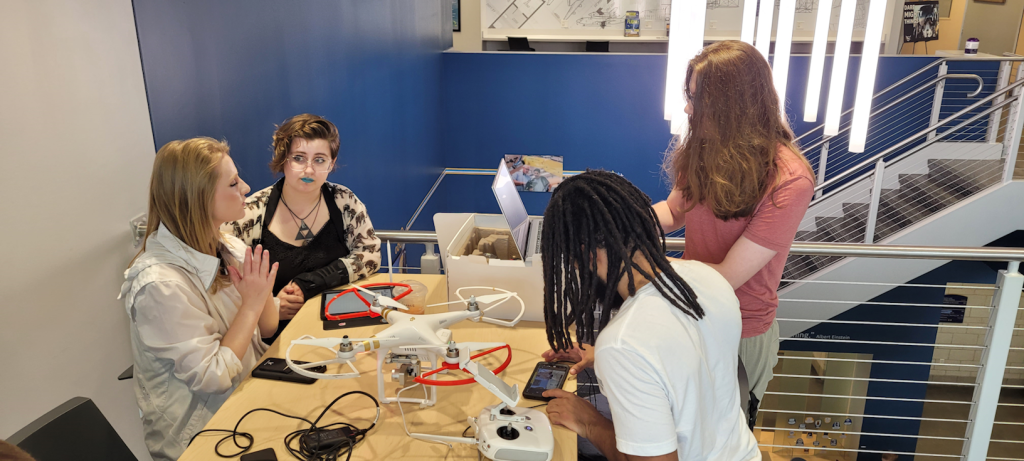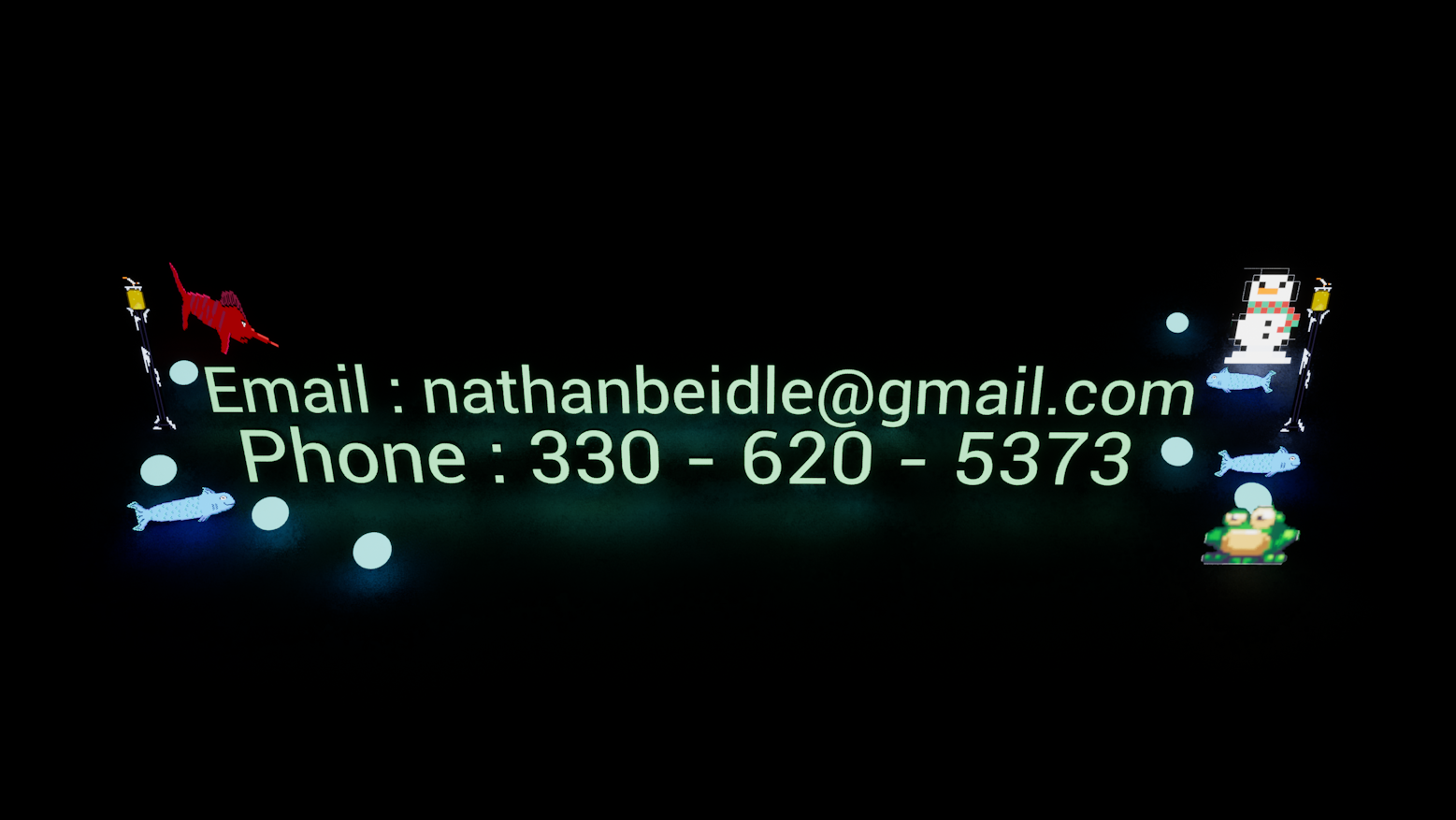
[HOME] -> [ENGINEERING PROJECTS] -> [WARFLYING DRONE]
Warflying Drone
What is “Warflying”?
Warflying is an offshoot of the common hacking practice of wardriving, which is an evolution of wardialing. Wardialing involved calling (dialing) random numbers in an attempt to find vulnarabilities. Wardriving modernized this concept by targetting wireless networks using more sophisticated technologies, such as single board computers (SBCs). Warflying seeks to further evolve this practice by combining drones and SBCs to increase the attack surface available to a hacker.
Required materials:
- Drone with 500g minimum cargo capacity
- Raspberry Pi or comparable SBC
- 2.4GHz/5.8GHz Antenna
- Computer
- Fasteners

Setup:
- Install Kismet on the Raspberry Pi or SBC.
- Install and configure the USB 2.4GHz/5.8GHz antenna on the SBC.
- Fasten your SBC onto the drone so that weight is evenly distributed laterally.
That’s it! Optionally, a PC can be configured to remotely connect to the SBC while flying, but this requires additional hardware, which may cause interference.
Kismet is a highly versatile, effective, and user friendly tool. It can be used for port scanning, packet sniffing, brute force attacks, and more.
Background about this project:
The warflying drone was a portion of a larger capstone project required by Kent State for engineering students. Another element of the capstone project was creating a marketable product for the university. To achieve this secondary goal, the drone’s camera was live streamed via OBS to a text detection script in python, the code for which is available below.
CODE
import numpy as np
import cv2
from mss import mss
from pyzbar.pyzbar import decode
import pytesseract
import imutils
from PIL import Image
bounding_box = {'top': 200, 'left': 0, 'width': 640, 'height': 480}
sct = mss()
pytesseract.pytesseract.tesseract_cmd = r'C:\Program Files (x86)\Tesseract-OCR\tesseract.exe'
def cleantext(dirtytext=None):
newtext = ''
allowed_characters = ['A', 'B', 'C', 'D', 'E', 'F', 'G', 'H', 'I', 'J', 'K', 'L',
'M', 'N', 'O', 'P', 'Q', 'R', 'S', 'T', 'U', 'V', 'W', 'X', 'Y', 'Z', '1', '2', '3', '4', '5',
'6', '7', '8', '9', '0', '-', '\n']
for x in dirtytext:
if x in allowed_characters:
newtext += x
return newtext
while True:
img = sct.grab(bounding_box)
img = np.array(img)
for code in decode(img):
print(code.type)
print(code.data.decode('utf-8'))
cv2.imshow('screen', np.array(img))
key = cv2.waitKey(1) & 0xFF
if key == ord("s"):
gray = cv2.cvtColor(img, cv2.COLOR_BGR2GRAY) #convert to grey scale
gray = cv2.bilateralFilter(gray, 11, 17, 17) #Blur to reduce noise
edged = cv2.Canny(gray, 30, 200) #Perform Edge detection
cnts = cv2.findContours(edged.copy(), cv2.RETR_TREE,cv2.CHAIN_APPROX_SIMPLE)
cnts = imutils.grab_contours(cnts)
cnts = sorted(cnts, key = cv2.contourArea, reverse = True)[:10]
screenCnt = None
for c in cnts:
peri = cv2.arcLength(c, True)
approx = cv2.approxPolyDP(c, 0.018 * peri, True)
if len(approx) == 4:
screenCnt = approx
break
if screenCnt is None:
detected = 0
print ("No contour detected")
else:
detected = 1
if detected == 1:
cv2.drawContours(img, [screenCnt], -1, (0, 255, 0), 3)
mask = np.zeros(gray.shape,np.uint8)
new_image = cv2.drawContours(mask,[screenCnt],0,255,-1,)
new_image = cv2.bitwise_and(img,img,mask=mask)
(x, y) = np.where(mask == 255)
(topx, topy) = (np.min(x), np.min(y))
(bottomx, bottomy) = (np.max(x), np.max(y))
Cropped = gray[topx:bottomx+1, topy:bottomy+1]
text = pytesseract.image_to_string(Cropped, config='--psm 11')
text = cleantext(text)
print("Detected Number is:",text)
cv2.imshow("Frame", img)
cv2.imshow('Cropped',Cropped)
cv2.waitKey(0)
if key == ord("z"):
quit()The text detection script uses publicly available libraries to read license plate numbers by over saturating the video, using AI on the oversaturated image to detect letters, and then using programmatic filters to find strings that match conventional license plate formats.

QUICK LINKS:
